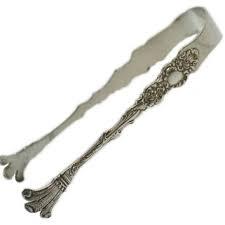-
Posts
195 -
Joined
-
Last visited
Content Type
Profiles
Forums
Articles
Gallery
Downloads
Events
Posts posted by Shamus Blargostadt
-
-
I don't know if URLs are frowned upon (I think I've seen some before) if so please delete and accept my profound apologies. Otherwise, I thought this was a very interesting article.
http://www.atlasobscura.com/articles/the-ten-trials-of-the-master-bladesmith
-
Though technically to stay within context of most knife and metallurgical conversations, when talking about carbon steels we are excluding stainless steels.
To remain on topic, I made my first pattern weld with hand hammer. It took a fair bit of time and I lost a great deal of material due to scale. But it worked. I now use this knife as a utility blade in the shop as a constant reminder of humble beginnings.
I would try to keep the two steels as close in relation as possible. With the amount of heats it will probably take there will be carbon migration galore. 15n20/1084 is a basic recipe for success. Leave wrought, mild steels or anything else that may suck the carbon over by a great deal, out.
Thank you very much for the tip Daniel. I'll get some bars of those for my first try. I'm sure I can look up the hardening requirements for those steels but I was wondering, if two steels have different hardening specs for temperature and quench material, how do you decide which to use?
-
I just saw that Anthony Bourdain show you were talking about. Oh my gosh that guy makes beautiful knives.
-
As you can see, you don't need a power hammer or press to pattern weld. I don't own any power forging equipment. All you need is a willingness to sweat, get burned and swing a sledge hammer. A little tip, don't play with 52100.

noted! Sweat and ability to get burned, I have plenty of.
-
will-do. Thank you for the replies.
-
Wow very nice Jeremy!
-
Since I don't have power to my shop I generally do this by hand. That's why I start with 25 layer billets of bandsaw blade and pallet strapping: 25,50,100,200,400 instead of 5,10,20,40,80,160,320
pallet strapping being those metal bands wrapped around stuff for shipping? I would love to see a pic of a blade made from those and bandsaw blades if you have one around.
Would you be willing to share your process? I'm wondering how you move from 25 very thin and I'm guessing narrow (1/2" wide?) strips of metal into a bar.
-
I just love how it looks and would like to try after I make another 5 or so knives but I don't think I will ever buy a power hammer (this side of a lottery win and I'm not lucky.)
Every youtube video I've seen of someone doing a pattern blade is using a power hammer. I'm hammering out truck leaf springs into blade thickness so I didn't think a billet would be too much harder.
-
was just curious, does anyone do pattern steel by hand?
-
Beautiful knife. Inspiring! Thank you for posting so many pics!
-
I will do that! Thank you Neil!
-
Wow very nice by eye!
-
I'm still trying to work through how to forge and move steel correctly and there is one area I'm struggling with.. well, several but was hoping to get advise on one. The piece I was working on developed a crack around where the tang ends and the blade begins.. so this is much smaller than I wanted it to be. The blade is now just around 6" (excluding tang) and I'm hoping to salvage.
I want the blade definition to be sharp by the handle but could not get rid of this curve. The spine is curved so it rocked when I tried to hammer it. Trying to put the curve on an edge of the anvil didn't help much either. Is there a method to forging this curve out or did I make a error in process by letting it emerge in the first place?
I was going to just cut it out with the angle grinder.. I'm just going to loose mass and will probably have to chop the tang off so it's not too long. Aside from those problems, this is the best I've done so far forging to a shape and consistent thickness.
-
Really nice recovery. If a noob question could be forgiven, how did you go from a four sided block to an octagon shape on the handle? That looks perfect.
-
I really like the design of those offset box jaws.
-
Shamus, I use two tongs for most of my knife work. A box jaw like the one Anthony posted, except the jaws on mine are wide enough to accommodate 1-1/2 inch wide stock, and a pair of V-bit offset tongs like the ones Pieh Tool sells. Pieh Tool actually calls these "Knife Maker tongs". The offset in the jaws allows the smith to grab the blade area b the edges and work the tang area. The blade extends through the tongs and sits parallel to the tong reins. I don't think I'm allowed to post a link to the Pieh Tool website here.
Thank you I found it. Boy those v-bit tongs look like a very nice design. Many of the tongs I've looked at on sites make me think "for that kind of money I'd take a shot at making them". I think it will be a couple hundred simple tongs down the road before I attempt something like those though. These look well worth the $50
That's a great site in general. Thanks for the tip!
Hey general question for the crew, when you make tongs what size stock do you start with?
-
Would like to see the outcome S.. you're not the only one struggling with this. I've been trying to figure out how to make a "square nail" (and failing) with more effort than I care to admit.
-
Look for these vids on You Tube ABS YouTube Video - How to Make Tongs for Bladesmithing by Ed Clarke
Thank you Charlotte I will!
One on the left I won at an iron in the hat, mine ain't nearly so pretty. Holds square well, and round okay. One on the right is for basic flat stuff, one in the middle (one on top) I use a lot. Hard to see, but it's basically the same as the one on the right, a bit longer, with jaws rounded out. Holds round 1/2" to maybe 3/4" well, and so so on squarish. (I used it a ton yesterday making horseshoe hoofpicks).
Thanks Nobody Special. That one on the left looks like it would be really useful for various widths and thickness’s, and shapes for that matter.
That far-right one looks just like one of the two that I have. The nibs are long and flat. I probably use it the most but I find it hard to hold the piece secure with it.
-
ah! haha! Good thing I'm not a proof reader. Wow horse shoeing tongs brings up a vast selection of images on google.
Anthony thanks! I've never seen tips like that but they look like they'd hold a bar pretty solidly.
-
-
I have two tongs I use which really don't work well for holding a bar being forged into a knife. I have some ideas of what good ones might look like but was hoping some folks might be willing to post pictures of their favourite tongs they use when forging knives, before I try to make some.
-
well... right before I noticed the crack I heated it to the point where sparks were flying off of it. I was trying to draw out the tang.
-
oh my gosh that's beautiful work. I'm curious about the line in the middle of the handle spine. Is that the tang or decorative metal that looks like a tang?
-
"fully functional" brings a list of requirements to the table. When you're spending hours slicing and chopping, a handle needs to be comfortable, needs to be shaped for control (contours for grip so you don't have to grip it so tight), and needs to be shaped (not round) so the person using it knows where the edge of the blade is by the feel of the handle.
stone might make a nice embellishment but as a cook, I'd never buy a knife with an all stone handle. Professional cooks and chefs are going to be thinking about things like carpel tunnel and cramps... and awesome looking knives.
I do much more cooking than blacksmithing and I concur with the previous posters on handle material.



using files
in Knife Making
Posted
I have some Nickolson Black Diamond files I picked up over the summer on the rumor they make good blade steel. Do they need to be ground completely smooth before forging?